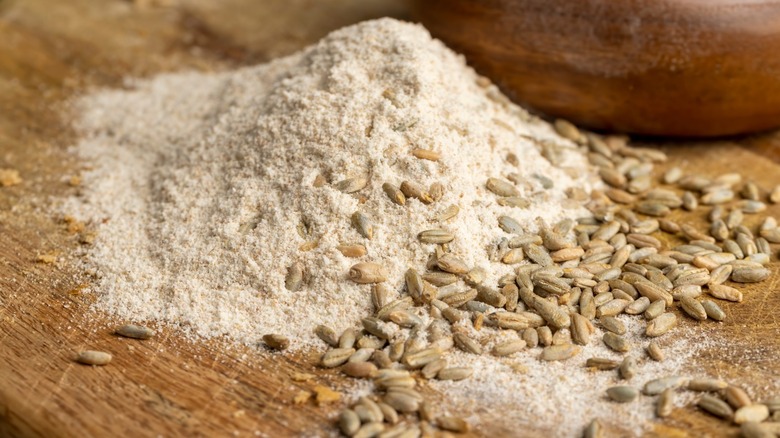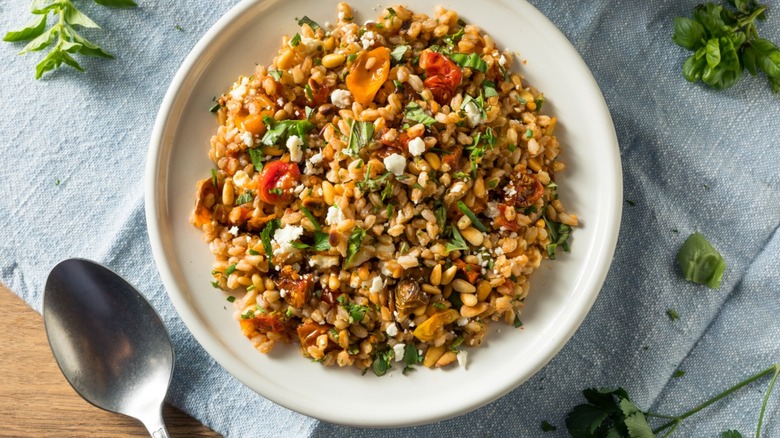Is Spelt A Good Substitute For Regular Flour And Rice?
Spelt is one of the world's ancient grains — meaning the same farming techniques used to cultivate the grain have been practiced for thousands of years — and it's also one of the healthiest. You'll find it as whole spelt grains (or also called spelt berries), which look like orzo pasta in a long, oval shape with pointed ends, or as finely milled spelt flour. In Europe, where spelt is primarily eaten and grown, it's cooked using the same methods as rice. It's enjoyed in similar ways, but with a slightly nuttier flavor and underlying tangy notes. With spelt boasting so many positive attributes, you might think that replacing all your flour and rice products for spelt would be a good idea. And while it can be, there are a few caveats to consider before incorporating spelt into your diet.
If you're someone who has been clinically diagnosed with celiac disease and therefore must abide by a strictly gluten-free diet (eliminating all wheat, barley, rye, and some oat products) then spelt is not safe as it does contain wheat. The same is true for those who may also have a wheat allergy or are sensitive to gluten. On the other hand, if you are not affected by gluten or wheat intolerance and are looking to increase your nutrition, then incorporating spelt may be a great way to give your meals a fresh spin.
How to incorporate spelt into your diet
Let's break down the nutrition a little further. A one-cup serving of cooked brown rice provides six grams of protein and three grams of fiber, versus the same serving of whole spelt which provides 10 grams of protein and whopping eight grams of fiber. This balance of nutrients is optimal for health considering that protein is essential to maintaining the functioning of the trillions of cells we're made out of, while fiber helps promote satiety and digestion. If you'd like to start replacing your usual go-to grain with spelt, first soak the grains overnight, strain out the water the next day, and cook the spelt just like you would prepare rice. Once cooked, the grains will have a soft texture with a bit of an al dente bite. Spelt's earthy flavor tastes great added to salads, curry-style dishes, or a unique breakfast porridge.
Alternatively, if you're interested in swapping spelt flour for bleached all-purpose flour in your baking, this is easier to do in recipes that actually call for whole wheat flours. You can substitute whole wheat flour for spelt flour 1:1 and achieve similar outcomes in texture and flavor, but with the benefit of more protein and fiber. One thing to keep in mind; Spelt flour contains less starch than all-purpose flour so it will absorb less liquid. It may be a good idea to reduce some of the liquid ingredients within a regular wheat flour recipe so you get the results you're hoping for.

